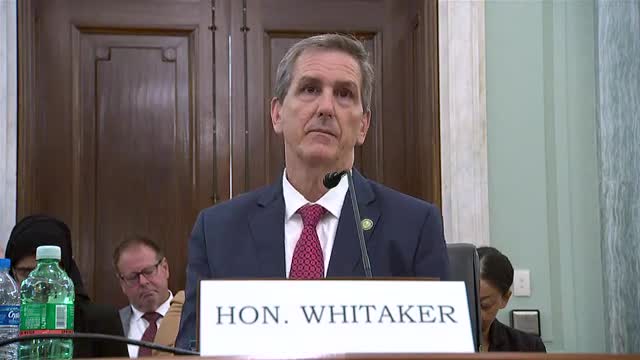Aviation safety demands urgent workforce overhaul
June 14, 2024 | Commerce, Science, and Transportation: Senate Committee, Standing Committees - House & Senate, Congressional Hearings Compilation

This article was created by AI summarizing key points discussed. AI makes mistakes, so for full details and context, please refer to the video of the full meeting. Please report any errors so we can fix them. Report an error »

In a recent government meeting, discussions centered on the critical need for enhanced oversight and workforce development within the aviation industry, particularly in light of challenges exacerbated by the COVID-19 pandemic. Officials emphasized the importance of having sufficient Federal Aviation Administration (FAA) inspectors on-site to ensure compliance with manufacturing specifications, particularly during the door removal and reinstallation processes in factories.
The dialogue highlighted the necessity of quality assurance measures, including systematic inspections and random oversight of assembly processes. Participants expressed a strong desire for a workforce that feels supported and heard, underscoring the role of FAA inspectors as a vital redundancy in the safety compliance system.
Concerns were raised regarding the current workforce's experience levels, with reports indicating that many employees have less than six years of experience. Boeing's quality chief acknowledged this issue and announced a commitment to enhance training programs, extending the minimum training duration from eight to ten weeks. However, questions lingered about whether increased training could effectively compensate for the lack of experience among workers.
The meeting also touched on the broader implications of these workforce challenges, with officials expressing optimism about the future of aviation manufacturing in the U.S. They noted the potential for significant growth, driven by a projected demand for 40,000 new planes and advancements in next-generation manufacturing technologies. However, they reiterated that ensuring safety is paramount to achieving these goals.
As the aviation sector looks to expand and innovate, the discussions underscored the critical intersection of safety, workforce training, and regulatory oversight, all of which are essential for maintaining the industry's competitive edge and ensuring public trust.
The dialogue highlighted the necessity of quality assurance measures, including systematic inspections and random oversight of assembly processes. Participants expressed a strong desire for a workforce that feels supported and heard, underscoring the role of FAA inspectors as a vital redundancy in the safety compliance system.
Concerns were raised regarding the current workforce's experience levels, with reports indicating that many employees have less than six years of experience. Boeing's quality chief acknowledged this issue and announced a commitment to enhance training programs, extending the minimum training duration from eight to ten weeks. However, questions lingered about whether increased training could effectively compensate for the lack of experience among workers.
The meeting also touched on the broader implications of these workforce challenges, with officials expressing optimism about the future of aviation manufacturing in the U.S. They noted the potential for significant growth, driven by a projected demand for 40,000 new planes and advancements in next-generation manufacturing technologies. However, they reiterated that ensuring safety is paramount to achieving these goals.
As the aviation sector looks to expand and innovate, the discussions underscored the critical intersection of safety, workforce training, and regulatory oversight, all of which are essential for maintaining the industry's competitive edge and ensuring public trust.
View full meeting
This article is based on a recent meeting—watch the full video and explore the complete transcript for deeper insights into the discussion.
View full meeting